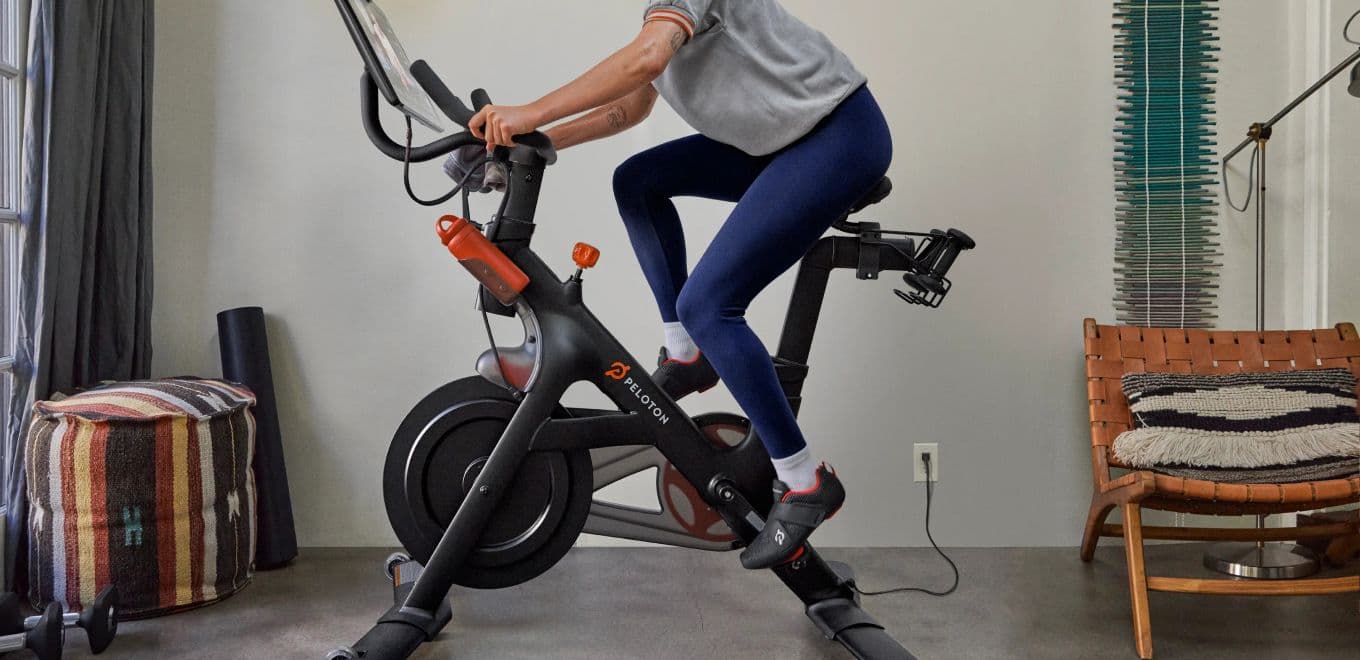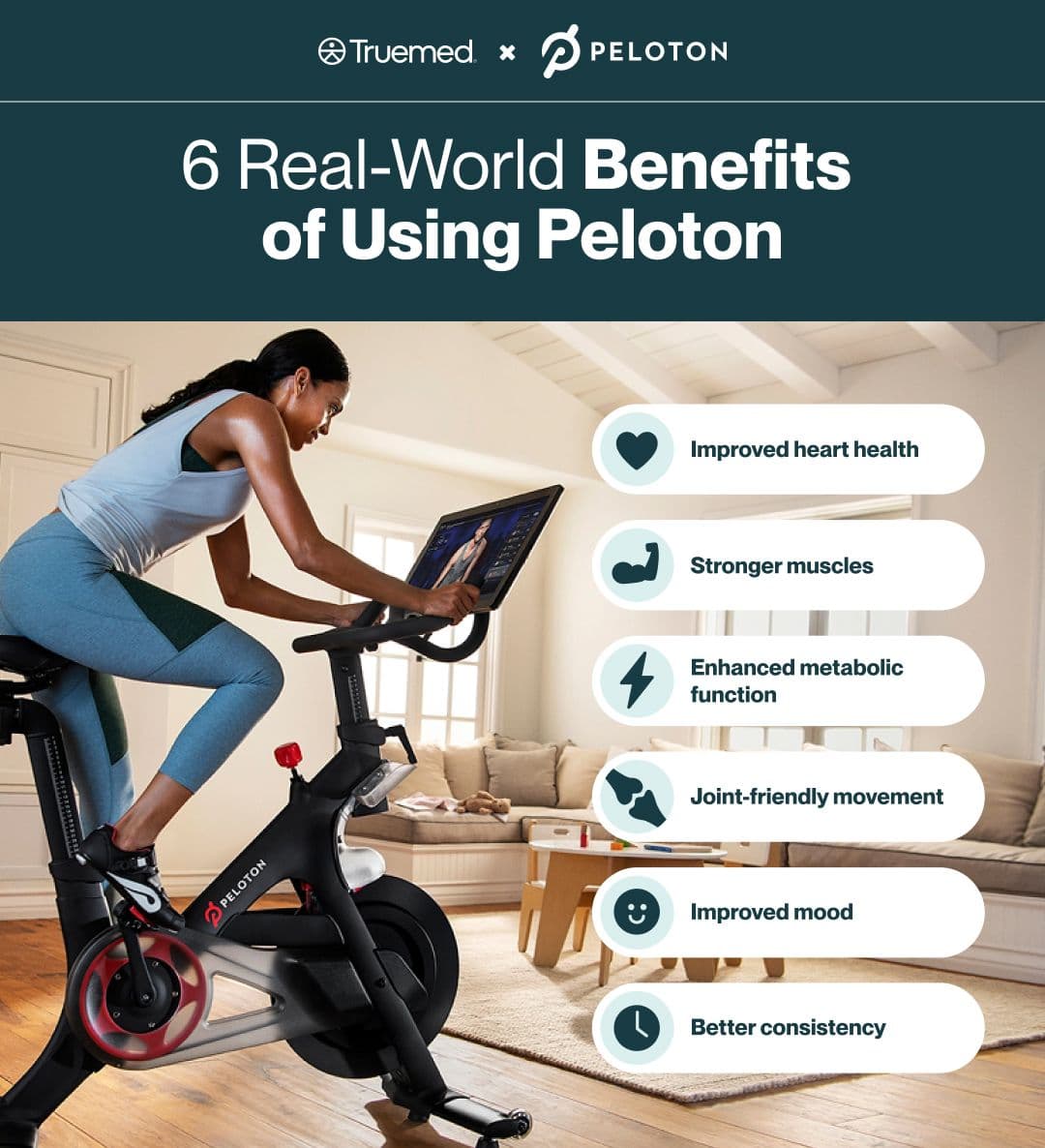Is Peloton Worth It? The Science (& Cost) Behind the Hype
Author:Kathleen Ferraro
Reviewed By:Bo Hickey, CSCS&Michaela Robbins, DNP
Published:
August 19, 2025

Is Peloton Worth It? The Science (& Cost) Behind the Hype
Peloton is beloved for its sleek at-home equipment, Instagram-famous instructors, and an online community that turns solo workouts into a shared experience. But all that motivation and convenience comes at a price—literally. In this guide, we’ll break down whether Peloton actually pays off for your long-term health and wellbeing.
Peloton isn’t just an exercise bike—it’s a full-blown fitness ecosystem built to help you move more, feel better, and stick with it for the long haul. What started as a cult-favorite stationary bike has evolved into a global wellness brand and online community. The hype is real, but is Peloton worth it from a scientific and financial perspective?
The short answer: It can be. For many people, Peloton isn’t just a luxury; it’s a powerful tool for improving heart health, building consistency, and even managing chronic conditions. And with the right setup, it might even be HSA- or FSA-eligible, making it a smart (and potentially tax-free) investment in your long-term health.
Here’s what the science says, how the costs break down, and how to decide whether Peloton is the right fit for your goals, health, and budget.
What Is Peloton?
At its core, Peloton is a connected fitness company known for high-end equipment and an immersive digital experience. But it’s more than just a streaming platform or a library of workout videos. What sets Peloton apart is its world-class instructors, live and on-demand classes, and a tight-knit digital community that makes working out from home feel anything but lonely.
And while the Bike put Peloton on the map, the brand has grown far beyond cycling. Today, the Peloton ecosystem includes:
- Peloton Bike and Bike+: These interactive indoor bikes feature built-in screens and access to thousands of guided rides, from beginner scenic cruises to intense HIIT climbs.
- Peloton Tread and Tread+: These smart treadmills are designed for walking, running, and full-body bootcamp classes, complete with touchscreens and real-time performance tracking.
- Peloton Row: This sleek rowing machine offers low-impact, high-reward workouts.
- Peloton app: No equipment? No problem. The app lets you stream strength training, yoga, Pilates, cardio, and even meditation sessions from your device anytime.
The Science Behind Peloton’s Popularity
Peloton didn’t build a cult following on fancy hardware alone. Its success is rooted in something deeper: behavior science, engagement psychology, and proven principles of fitness adherence.
Motivation and accountability
Sticking to a workout plan is hard, especially when life gets chaotic. That’s where Peloton changes the game. With real-time stats, streaks, badges, and leaderboards, it gamifies fitness in a way that turns working out into something you want to do, not just something you “should” do.
Peloton’s classes and community make it easier to keep showing up, says Amanda Grimm, CPT, a personal trainer and running coach at We Run. “Where they really make the difference is in engagement levels through leaderboards, streaks, and data-driven personalisation which motivate consistency.”
For example, hitting a 30-day streak or climbing the live leaderboard in a class gives users tangible wins and a reason to log back in tomorrow.
Research backs this up. One study found that two of the strongest predictors of long-term exercise adherence were simply enjoying your workouts and feeling confident in your ability to stick with them.
Peloton also helps you track your performance over time, with metrics like pace, cadence, resistance, heart rate, and class history. The bike also includes “output” (cadence x resistance) and power zones (such as your VO2 Max zone). Whether you're chasing a new PR or simply moving your body after a long day, the platform celebrates your effort.
Interactive training
Beyond motivation, Peloton brings structure to every workout. Each class is led by a certified personal trainer and follows a deliberate arc—warm-up, intervals, cool-down—paired with energizing music and expert cues that keep you engaged from start to finish.
Peloton instructors don’t just tell you what to do; they explain how to do it and why it matters. Whether it’s a reminder to adjust your form during a hill climb or an explanation of how intervals impact your heart rate and endurance, these insights turn each class into a mini coaching session.
And with Peloton, you’re not just another viewer in a sea of screen names. In live classes, instructors can actually see who’s riding and give personalized shout-outs for everything from your first ride to your 500th.
Convenience and accessibility
Getting to the gym can be half the battle, especially if you’re juggling kids or working odd hours. With Peloton, the gym comes to you. “The flexibility aspect of both schedule and variety means that using a Peloton machine is likely to fit well with even the busiest of lives,” says Grimm.
You can ride at 6 a.m., walk during your lunch break, or row at midnight—whatever works for you. That kind of flexibility makes consistent movement feel achievable, not aspirational, especially for people using exercise as part of a larger health strategy.
Peloton is also a great option for those living in remote areas, where fitness classes may be limited or not at ideal times. Some buyers have noted that Peloton’s monthly price ended up being cheaper than a local spin studio membership, plus there are no class time restrictions.
And there’s research to support it: One review found that lack of time and demanding work schedules were major barriers to sticking with a fitness routine. By removing those obstacles, Peloton makes it easier to build the kind of consistency that can lead to long-term health gains.
Real-World Benefits of Using Peloton
Now let’s move from theory to practice—what does Peloton actually do for your health?
Put simply, it can do a lot. When used regularly, Peloton’s platform can support meaningful improvements in both physical and mental health. Here’s how:
- Improved heart health: Indoor cycling and other aerobic exercise boosts cardiovascular endurance, says Grimm. Over time, it can also help lower blood pressure and reduce your risk of heart attack.
- Stronger muscles: Whether you’re pedaling through a hill climb on the Bike or doing bodyweight circuits via the Peloton app, consistent classes can increase muscle strength and endurance, says Grimm.
- Enhanced metabolic function: Regular exercise improves insulin sensitivity, regulates blood sugar levels, and supports weight management.
- Joint-friendly movement: Peloton machines offer low-impact workout options, which protect your joints from unnecessary wear and tear, says Grimm. That makes them a smart choice for anyone recovering from injury or managing chronic joint pain from arthritis or similar conditions.
- Improved mood: Research shows that regular exercise can ease anxiety and depression, boost mood, and improve sleep.
- Better consistency: The platform is designed to encourage adherence through streaks, performance tracking, class variety, and that extra boost from live instructor shout-outs, Grimm says.
- Opportunity to explore other disciplines: You might start on the Peloton bike only, then try a Peloton meditation class and realize how good the breathing practice is for your performance in other areas. Then you might end up trying a Peloton yoga class, etc. At-home fitness tools like this allow you to access a holistic program without having to go to multiple different locations.

Peloton Review: What Users Are Saying
Across reviews, Reddit threads, and influencer posts, the verdict is clear: People who stick with Peloton tend to love it. Here’s the good:
- Top-tier instructors who blend skill, energy, and inspiration
- Massive workout library, including different types of exercise for all fitness levels
- Performance metrics that track your usage and progress over time
- Strong community that supports accountability and fun
Still, users report certain downsides, including:
- High upfront cost and ongoing subscription fees
- Occasional tech or warranty hiccups
- Poor customer service for bike repairs
The Cost of Peloton: Breaking It Down
Peloton pricing includes both hardware (your bike, tread, or rower) and software (a monthly membership that unlocks the classes, metrics, and instructor magic the platform is known for). Here’s what the core products cost:
There’s no denying that the upfront cost is steep, says Grimm. Luckily, there are ways to trim the price tag, including:
- Bundles that include accessories like cycling shoes, weights, and a mat
- Referral discounts from current users
- Certified refurbished Peloton bikes
- Discounts for students, educators, first responders, military members, and healthcare workers, which bring the app subscription down to as low as $6.99 per month and offer up to $600 off of equipment
- Using HSA or FSA dollars (as long as you can prove it’s medically necessary)
Even with deals, though, Peloton isn’t the cheapest fitness option on the market, especially when compared to more basic bikes or free apps. But for many, the long-term value lies in how often they use it.
“[Using] Peloton long term is still costly, but can rival a higher end gym membership through the convenience of immediate access and no commute time,” says Grimm. For instance, a premium gym might cost as much as $355 per month (that’s $4,260 a year!), while a Peloton Bike and membership together typically average out to less over time with regular use.
If you're using Peloton to manage a qualifying health condition—like high blood pressure, insulin resistance, chronic joint pain, or post-injury rehab—you might be eligible to use your HSA or FSA to pay for it. This could save you an average of 30% by paying with pre-tax dollars. Fitness equipment doesn’t qualify by default. But it does when designated by a provider as medically necessary.
That’s where a letter of medical necessity (LMN) comes in. An LMN is a formal recommendation from a licensed clinician stating that the fitness equipment or program is necessary to treat, cure, prevent, or mitigate a chronic health condition.
Truemed makes it easy to spend your HSA/FSA on qualified Peloton products. First find Peloton on the Truemed marketplace, shop eligible products, and find the Truemed logo at checkout. Next, you’ll take a quick health survey, which a licensed provider will review to determine your eligibility. After completing the survey, you can enter your HSA/FSA into the payment section or, if you use a regular credit card, follow the included guide to submit your purchase for reimbursement.

Is Peloton Worth It? Pros vs. Cons
Peloton equipment doesn’t come cheap, so it’s worth weighing the pros and cons before making the investment. According to Grimm, here are the upsides to consider:
- High-quality equipment
- Engaging, qualified instructors and structured programming
- Broad array of fitness and wellness classes
- Convenience of working out any time from home
- Motivation from instructors, fellow Peloton users, and personalized metrics
On the flip side, here are a few potential drawbacks to keep in mind:
- Upfront cost plus subscription fees to access top-tier classes
- Equipment requires dedicated space
- Not ideal for those focused solely on strength training
Still on the fence? You don’t have to commit right away. Peloton offers a 30-day free app trial, which includes a wide range of equipment-free workouts like strength, yoga, cardio, and meditation. Trying it out can help you gauge how often you'd actually use it and whether the platform fits your goals and routine.
From there, you can make a more informed choice: upgrade to the full equipment experience, stick with the app-only subscription, or walk away knowing you gave it a shot.
Who Should (and Shouldn’t) Consider Peloton?
Ultimately, how much you invest in Peloton—or whether you invest at all—comes down to your personal preferences, health goals, and lifestyle.
“If structured, interactive at-home fitness that is driven by community or data suits you, then Peloton could be a good choice,” says Grimm. “However, for those whose driver is budget, strength training, or the in-person social aspect of exercise, it may not work so well.”
According to Grimm, Peloton is worth considering if:
- You have a busy schedule and struggle to exercise consistently
- You want flexibility to choose your class time, format, instructor, length, and intensity
- You’re looking to improve your metabolic or cardiovascular health
- You’re recovering from an injury
- You have a condition that affects your joint health and need low-impact options
- You want personalized data and progress tracking to stay motivated
Peloton may be less suitable if:
- You’re budget-conscious
- You exercise occasionally
- You prefer in-person gym environments or group classes with face-to-face interaction
Peloton offers more than workouts: It’s a structured system built for consistency, combining expert instruction, a wide variety of options, and a supportive digital community.
Regular Peloton use can support real health outcomes: These include improved cardiovascular fitness, metabolic function, joint health, and mood.
The upfront cost is steep: But there are ways to save, including referral codes, refurbished equipment, and discounts for certain populations.
If you have a qualifying health condition: You may be able to use your HSA or FSA to cover the eligible Peloton products. Truemed streamlines the process by connecting you with a licensed provider who can assess your eligibility and, if appropriate, issue a letter of medical necessity.
The Peloton app offers a 30-day free trial: You'll have access to equipment-free workouts so you can test the experience before investing in hardware.
Peloton is a strong fit for : people who value structure, flexibility, and data-driven fitness. However, it may not be ideal for occasional exercisers or those focused solely on strength training or social in-person classes.
Editorial Standards
At True Medicine, Inc., we believe better health starts with trusted information. Our mission is to empower readers with accurate and accessible content grounded in peer-reviewed research, expert insight, and clinical guidance to make smarter health decisions. Every article is written or reviewed by qualified professionals and updated regularly to reflect the latest evidence. For more details on our rigorous editorial process, see here.


